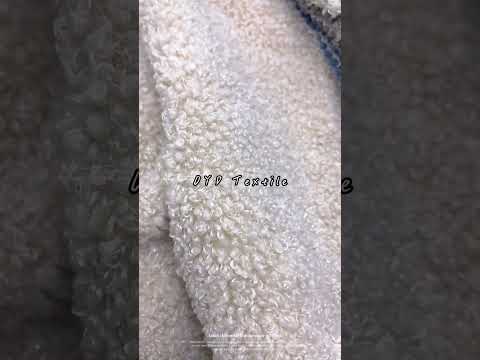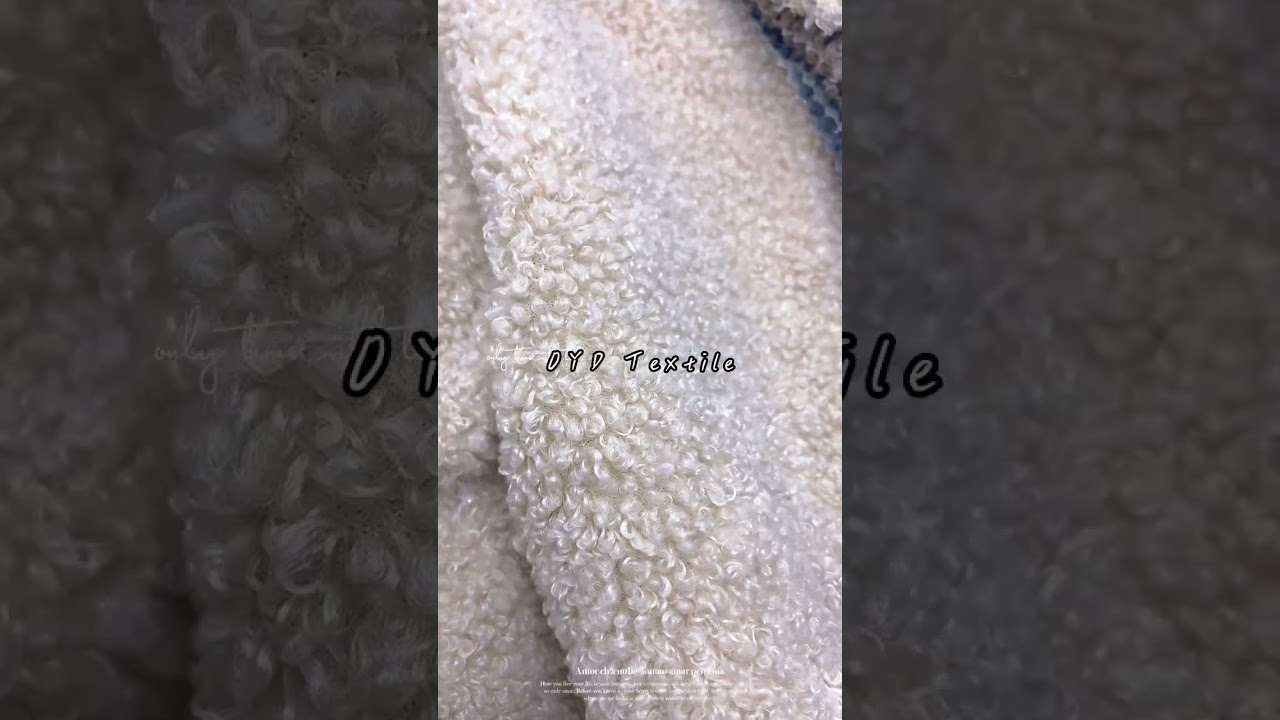Teddy fabric is the epitome of comfort, luxury, and warmth. Imagine wrapping yourself in a cloud-like material that feels incredibly soft and cozy against your skin. This extraordinary fabric is specifically designed to provide a sensory experience like no other, enveloping you in a gentle embrace that soothes and relaxes. With its plush texture and irresistibly touchable surface, it becomes impossible to resist the allure of teddy fabric.
Crafted with meticulous attention to detail, this fabric is not only sumptuously soft but also durable and long-lasting. Its high-quality fibers ensure that it retains its plushness even after countless snuggles and cuddles. Whether you’re seeking solace on a chilly winter evening or simply yearning for a touch of indulgence, teddy fabric is the answer.
But it’s not just about the incredible feel; teddy fabric also embodies style and elegance. Its versatility allows it to blend seamlessly with any interior or fashion ensemble, adding a touch of sophistication and charm. Whether used as a throw, a blanket, or incorporated into clothing and accessories, this fabric adds a touch of luxury to any setting.
Experience the ultimate in comfort and style with teddy fabric. Indulge yourself in its heavenly softness and discover a world of serenity and relaxation. Once you experience the sheer bliss of teddy fabric, you’ll never want to let it go.

The History of Teddy Fabric
Teddy fabric is a type of fabric that is known for its softness and cuddly texture. It is commonly used in the production of stuffed animals, blankets, and other cozy items. This article will explore the history of teddy fabric, its characteristics, and its various uses.
The Origins of Teddy Fabric
The history of teddy fabric dates back to the early 20th century when it was first created as a synthetic textile. The fabric was named after the beloved stuffed bear, Teddy Bear, which gained immense popularity during that time. Teddy fabric was specifically designed to mimic the soft and plush feel of a teddy bear’s fur, hence its name.
Teddy fabric is made from a variety of materials, including polyester, acrylic, and sometimes a blend of both. These materials are carefully woven together to create a fabric that is not only soft but also durable and resistant to wear and tear.
The Characteristics of Teddy Fabric
One of the main characteristics that sets teddy fabric apart is its incredibly soft and fuzzy texture. It is often described as feeling like a warm hug, making it a popular choice for children’s toys and blankets. The fabric is also known for its excellent insulation properties, making it perfect for winter clothing and bedding.
Another important characteristic of teddy fabric is its ability to retain heat. This makes it an ideal choice for winter garments, as it helps to keep the wearer warm and cozy in cold weather. Additionally, the fabric is known for its breathability, allowing air to circulate through the material and prevent overheating.
Teddy fabric is also highly resistant to pilling, which is the formation of small balls of fabric on the surface. This ensures that the fabric remains soft and smooth even after frequent use and washing. Furthermore, teddy fabric is easy to clean and maintain, as it can be machine washed without losing its softness or shape.
Uses of Teddy Fabric
Teddy fabric is widely used in the manufacturing of stuffed animals, such as teddy bears, as well as other plush toys. Its soft and cuddly texture makes it the perfect material for creating comforting companions for children and adults alike. Additionally, teddy fabric is used in the production of blankets and throws, providing warmth and comfort during colder months.
Furthermore, teddy fabric is often used in the creation of winter clothing items, such as coats, jackets, and sweaters. Its excellent insulation properties make it an ideal choice for protecting against chilly temperatures. The fabric is also used in the production of hats, scarves, and gloves, providing cozy accessories for the winter season.
Aside from its use in the textile industry, teddy fabric is also utilized in the interior design sector. It is commonly used for upholstery, adding a touch of warmth and comfort to furniture pieces. Teddy fabric can also be found in pillows and cushions, providing a plush and inviting feel to any living space.
The Future of Teddy Fabric
The demand for teddy fabric continues to grow, as it remains a popular choice for various industries. With advancements in technology and textile manufacturing, new variations of teddy fabric are constantly being developed. These innovations aim to enhance the softness, durability, and sustainability of the fabric.
In recent years, there has been a rising interest in creating eco-friendly teddy fabric. Manufacturers are exploring more sustainable materials, such as recycled polyester, to reduce the environmental impact of production. This ensures that the future of teddy fabric remains not only soft and cuddly but also environmentally conscious.
In conclusion, teddy fabric has a rich history and is known for its softness, durability, and versatility. It has become a beloved material in the production of stuffed animals, blankets, and winter clothing. As technology advances, the future of teddy fabric looks promising, with a focus on sustainability and innovation.
Fluffify Your Home with Plush 100% Polyester Velvet Sofa Fabric
Video Source : China Sofa Fabric Factory
List of Teddy Fabric
Teddy Fabric Information
| Fabric Type | Composition | Characteristics |
|---|---|---|
| Minky | Polyester | Minky fabric, often used for teddy bears, is composed of 100% polyester fibers. This fabric is known for its soft and plush texture, making it perfect for creating cuddly and huggable teddy bears. It has a high pile, giving teddy bears a fluffy appearance and a luxurious feel. Minky fabric is also highly durable and resistant to pilling, ensuring that your teddy bear will stand the test of time. |
| Faux Fur | Polyester or Acrylic Blend | Faux fur fabric is a popular choice for teddy bears due to its resemblance to real animal fur. It is typically composed of a blend of polyester or acrylic fibers, which create a soft and plush texture. Faux fur teddy bears offer a realistic and luxurious look, mimicking the appearance of various animal furs, such as bear, rabbit, or fox. This fabric is also highly versatile, allowing for various patterns and colors to be incorporated into the design of the teddy bear. |
| Cotton | 100% Cotton | Cotton fabric is often used for teddy bears, especially for those intended for infants and young children. This fabric is hypoallergenic and gentle on sensitive skin, making it suitable for cuddling and playtime. Cotton teddy bears have a soft and breathable texture, ensuring comfort for both children and adults. Additionally, cotton fabric can be easily dyed, allowing for a wide range of vibrant and cute designs to be applied to the teddy bears, making it a popular choice for collectors and gift-givers. |
As an expert in teddy bear fabrics, it is crucial to understand the different types of fabrics available and their unique characteristics. Minky fabric, with its 100% polyester composition, offers an incredibly soft and plush texture that is perfect for creating irresistibly cuddly teddy bears. Faux fur fabric, typically made from a blend of polyester or acrylic fibers, provides a realistic and luxurious look, replicating various animal furs. Cotton fabric, on the other hand, is preferred for its hypoallergenic and breathable qualities, making it ideal for teddy bears intended for infants and young children. By utilizing these fabrics, you can create teddy bears that are not only visually appealing but also provide a delightful tactile experience for their owners.

